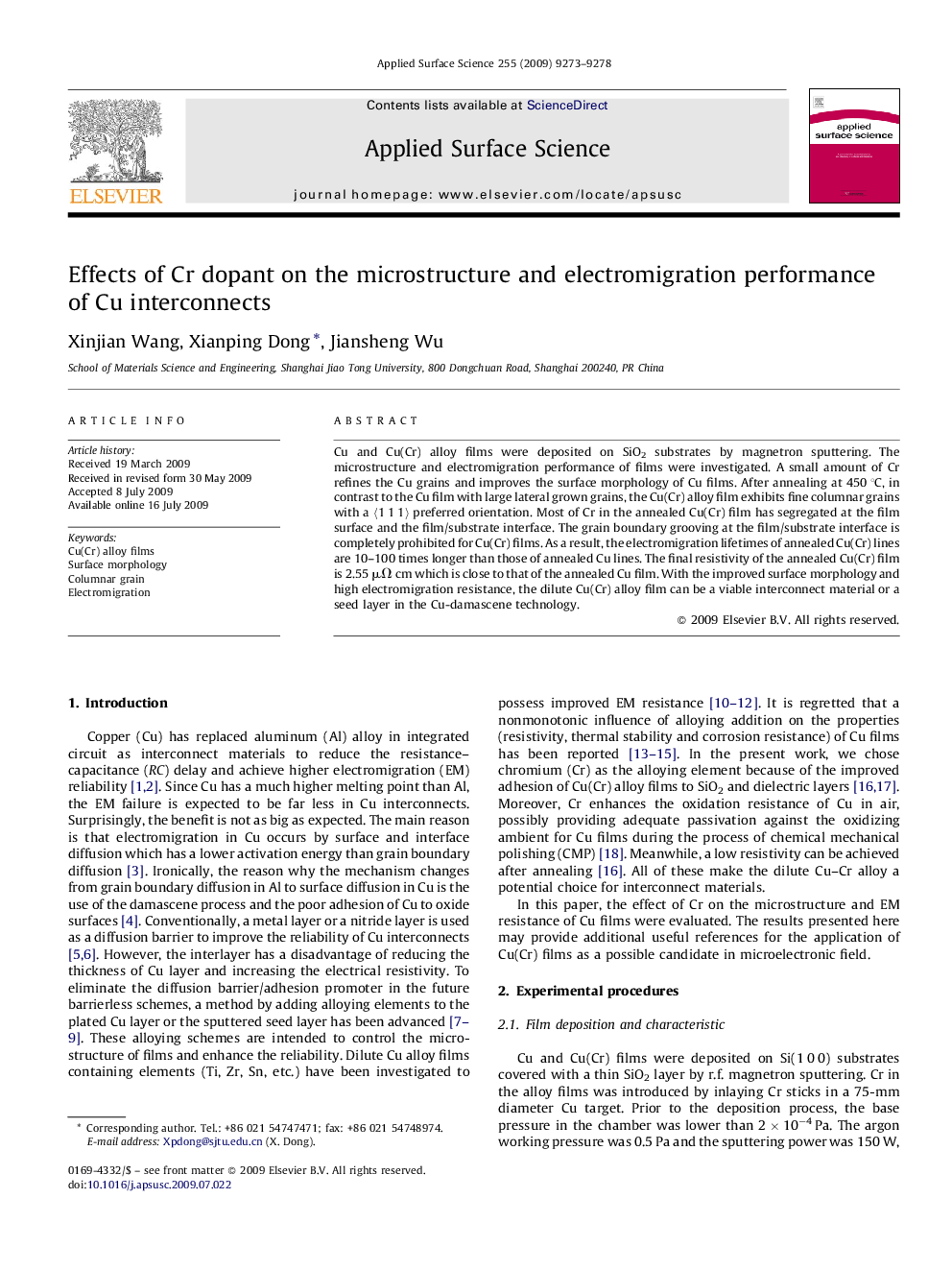| Article ID | Journal | Published Year | Pages | File Type |
|---|---|---|---|---|
| 5369081 | Applied Surface Science | 2009 | 6 Pages |
Cu and Cu(Cr) alloy films were deposited on SiO2 substrates by magnetron sputtering. The microstructure and electromigration performance of films were investigated. A small amount of Cr refines the Cu grains and improves the surface morphology of Cu films. After annealing at 450 °C, in contrast to the Cu film with large lateral grown grains, the Cu(Cr) alloy film exhibits fine columnar grains with a ã1 1 1ã preferred orientation. Most of Cr in the annealed Cu(Cr) film has segregated at the film surface and the film/substrate interface. The grain boundary grooving at the film/substrate interface is completely prohibited for Cu(Cr) films. As a result, the electromigration lifetimes of annealed Cu(Cr) lines are 10-100 times longer than those of annealed Cu lines. The final resistivity of the annealed Cu(Cr) film is 2.55 μΩ cm which is close to that of the annealed Cu film. With the improved surface morphology and high electromigration resistance, the dilute Cu(Cr) alloy film can be a viable interconnect material or a seed layer in the Cu-damascene technology.
